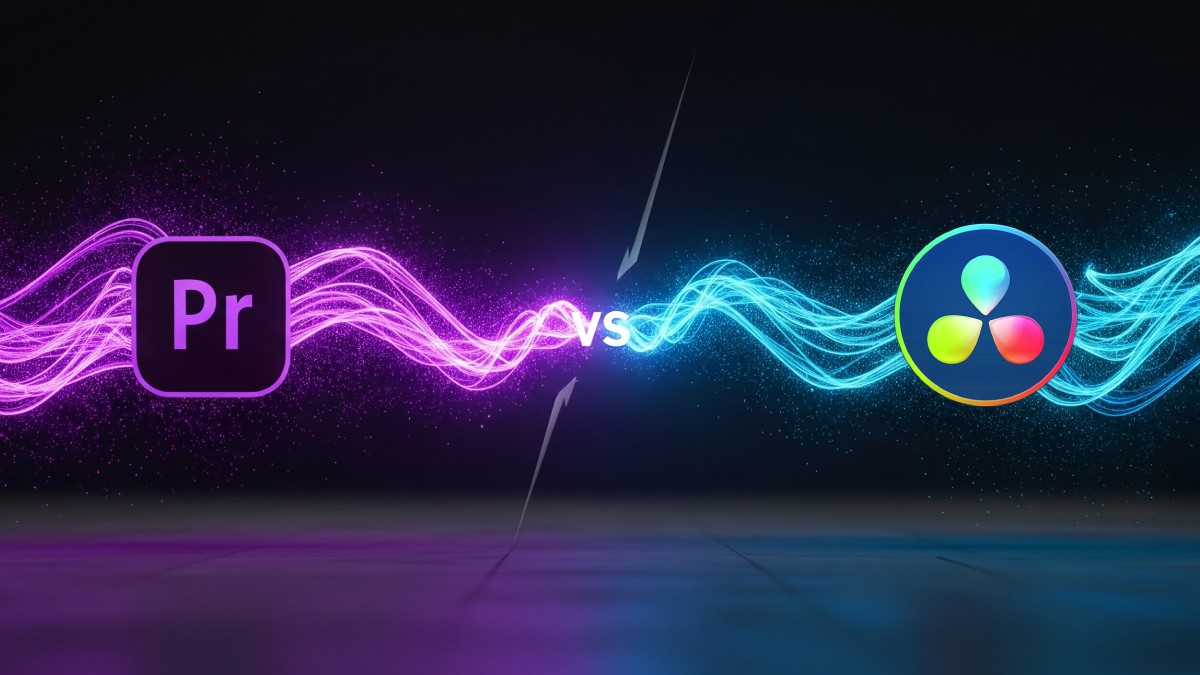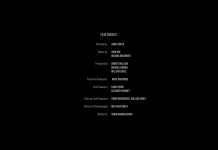This post contains affiliate links. We may earn a commission if you click on them and make a purchase. It’s at no extra cost to you and helps us run this site. Thanks for your support!
The choice between video editing software often feels like a monumental decision. It shapes your creative workflow, your efficiency, and even your career path. For years, two titans have dominated this space: the established industry champion, Adobe Premiere Pro, and the powerful, all-in-one challenger, DaVinci Resolve. This comprehensive comparison of Adobe Premiere Pro vs DaVinci Resolve aims to clear the confusion, especially with the latest 2025 updates. We will explore their core architecture, feature sets, and unique workflows. So, which one truly fits your workflow and creative ambitions?
What’s New? The Latest 2025 Updates
Software never stands still, and 2025 has brought significant updates to both platforms. Understanding these new features is crucial because they reveal the direction each developer is taking.
Adobe Premiere Pro 25.3 (June 2025) has focused heavily on refining the editor’s daily experience.
- Advanced Metadata Filtering: You can now instantly search your project using specific tags, labels, and clip attributes. This makes finding the perfect shot in a massive project incredibly fast.
- Color-Coded Sequence Tabs: A simple but brilliant update. Label colors are now visible directly on sequence tabs in your timeline, allowing for better organization at a glance.
- Improved Metadata Handling: Premiere Pro now automatically detects super-white and sub-black ranges in DNxHR/HD files and correctly handles CICP color tags for superior HDR workflows.
- More GPU-Accelerated Effects: Popular effects like Turbulent Displace and Lighting Effect are now GPU-accelerated, resulting in smoother playback and faster exports, particularly on M3 Macs.
- Generative AI Previews: Adobe is flexing its AI muscle. Previews from Adobe MAX London 2025 showcased Firefly-powered generative features, including Generative Extend to intelligently expand 4K shots, and automatic voice-over translation into 25 languages.
DaVinci Resolve 20 (May 2025), on the other hand, went all-in on built-in AI automation and specialized tools.
- New AI Features: The update introduced AI IntelliScript for script-based editing, AI Animated Subtitles, an AI Audio Assistant for auto-mixing, and an AI Multicam SmartSwitch that automatically cuts between camera angles.
- Core Tool Enhancements: Resolve 20 also added major improvements to its keyframe editor, a new voice-over palette, and significant updates to its renowned Magic Mask and depth-map tools.
The Common Ground: Where They Both Excel
Before dissecting their differences, it is important to acknowledge their shared strengths. Both Premiere Pro and Resolve are professional-grade, non-linear editors (NLEs). They are both cross-platform, running on Windows and macOS, though Resolve also offers Linux and iPadOS versions.
You can expect full multi-track video and audio editing from either. They both handle modern, demanding formats like 4K, 8K, and HDR with ease. Support for codecs like DNxHD/HR, AV1, and RED R3D is standard. Furthermore, both leverage hardware acceleration through your computer’s GPU to speed up decoding, encoding, and effects processing. Premiere Pro uses its trusted Mercury Playback Engine, while Resolve utilizes OpenCL, CUDA, and Metal. In essence, both are incredibly powerful and capable of producing world-class content.
The AI Showdown: Adobe Premiere Pro vs DaVinci Resolve
Artificial intelligence is no longer a gimmick; it is a core part of the modern editing workflow. However, when we talk about Adobe Premiere Pro vs DaVinci Resolve, the two programs approach AI from fundamentally different philosophies.
Premiere Pro, leveraging the power of Adobe Sensei and Firefly, focuses its AI on streamlining creative workflows and generating content.
- Generative Extend is a game-changer, allowing you to smartly fill the frame when you need to extend a shot or change its aspect ratio.
- AI-powered search lets you find clips using natural language, like “show me clips with a brown hat.”
- Its auto-captioning and translation tools are best-in-class, saving hours of tedious work on projects destined for a global audience.
DaVinci Resolve, in contrast, bakes its AI directly into the technical editing process to automate specific tasks.
- AI Multicam SmartSwitch analyzes your footage and automatically creates a rough cut from multiple camera angles.
- IntelliScript connects your script to your footage, allowing you to edit by highlighting text.
- Its AI is deeply integrated into technical tasks like masking, motion tracking, and audio ducking.
Premiere’s AI feels more like a creative partner, helping you find assets and generate new possibilities. Resolve’s AI, on the other hand, acts more like a highly efficient assistant, automating repetitive technical jobs. For the all-around creator, Premiere’s approach often provides more immediate and versatile value.
Workflow and Interface: The Deciding Factor
This is where the two programs diverge most significantly and where Premiere Pro truly establishes its dominance for the majority of users.
Adobe Premiere Pro uses a single, unified workspace. All your tools—editing, effects, color, audio, and titles—are housed in customizable panels that you can arrange to your liking. If you have ever used Photoshop or After Effects, you will feel right at home. This integrated environment makes it incredibly intuitive. You can seamlessly move from trimming a clip to adjusting its color to adding a title without ever leaving your main screen. This fluid, non-linear approach encourages creative experimentation.
The integration with the Adobe Creative Cloud ecosystem is Premiere Pro’s undisputed superpower.
- Need advanced motion graphics? You can send a clip to After Effects with a right-click using Dynamic Link. Changes you make in After Effects appear instantly in your Premiere timeline, with no rendering required.
- Need to clean up audio? Send it to Adobe Audition.
- Need a custom graphic? Create it in Photoshop or Illustrator and drop it directly into your project.
This seamless interoperability is something no other software can match. It makes Premiere Pro the heart of a complete creative toolkit, not just a standalone editor.
DaVinci Resolve takes a completely different approach with its “Pages.” It divides the workflow into seven distinct modules: Media, Cut, Edit, Fusion, Color, Fairlight, and Deliver. To perform a task, you must switch to its dedicated page. For instance, color grading happens exclusively on the Color page, and complex visual effects are built on the Fusion page.
While this compartmentalized workflow is powerful for specialists (like a dedicated colorist who only works on the Color page), it creates a much steeper learning curve for the generalist editor. It can feel rigid and disruptive to have to constantly switch environments to perform different tasks. This page-based system often interrupts creative flow, forcing you to think technically rather than creatively.
A Clear Look at Pros and Cons
Let’s break down the key advantages and disadvantages of each platform.
Adobe Premiere Pro 25.3 (Subscription)
Pros:
- The Industry Standard: More tutorials, more third-party plugins, and more job opportunities. It is the language of the professional video world.
- Intuitive and Beginner-Friendly: Its single-window interface is far more approachable for new editors and those familiar with other Adobe products.
- Unbeatable Integration: The seamless workflow with After Effects, Photoshop, and the rest of Creative Cloud is its greatest strength.
- Powerful AI Tools: Features like Generative Extend and AI-powered search and translation directly enhance the creative process.
- Reliable Updates and Support: The subscription model ensures you are always on the latest version with robust support resources.
Cons:
- Subscription Model: This is a recurring cost, which can be a consideration for some.
- Occasional Bugs: Like any complex software, the 25.3 version has some known issues (e.g., white noise on MTS imports, crashes with certain RED LUTs), though workarounds are typically available.
DaVinci Resolve 20 (Free or One-Time Purchase)
Pros:
- Incredible Value: The free version is astonishingly capable, and the Studio version is a one-time fee of $295.
- World-Class Color Grading: It is the undisputed king of color correction and grading.
- All-in-One Powerhouse: Integrated Fusion VFX and Fairlight audio mixing are incredibly powerful for a single application.
- Modern Architecture: It is known for its stability and excellent performance, especially with multi-GPU setups.
Cons:
- Steep Learning Curve: The page-based workflow and node-based compositing in Fusion are not intuitive for beginners.
- Isolated Ecosystem: Integration with external creative apps is clunky compared to Adobe’s seamless ecosystem.
- Limited Free Version: The free version lacks some of the most advanced AI features, noise reduction, and HDR grading tools.
Feature Comparison at a Glance
| Feature Area | Adobe Premiere Pro 25.3 | DaVinci Resolve 20 |
| Pricing | Subscription (≈ $22.99/month) | Free or Studio one-time $295 |
| AI Tools | Generative Extend, AI search, caption translation | Multicam SmartSwitch, IntelliScript, Audio Assistant |
| Workflow/UI | Winner: Single, customizable workspace | Page-based, specialized modules |
| Color Grading | Excellent Lumetri panel, great for most users | Best-in-class, industry standard for colorists |
| Audio Tools | Good built-in tools, seamless Audition integration | Integrated Fairlight digital audio workstation |
| Visual Effects | Winner: Full, seamless integration with After Effects | Powerful built-in Fusion for node-based VFX |
| Collaboration | Team Projects via Creative Cloud | Blackmagic Cloud and Frame.io integration |
The Final Verdict: Why Premiere Pro is the Winner for Most Creators
So, after comparing Adobe Premiere Pro vs DaVinci Resolve, which one should you choose?
While DaVinci Resolve 20 is an exceptional piece of software with unparalleled color grading tools and a fantastic pricing model, it serves a more specialized audience. Its steep learning curve and rigid, page-based workflow can be a significant barrier for the all-around video creator, freelancer, or agency editor who needs to do a little bit of everything.
Adobe Premiere Pro 25.3 remains the champion for the modern creative professional.
It was a close race, and opinions may vary, but for us, Adobe Premiere Pro came out on top by a narrow margin. Its strength lies not just in its powerful editing features but in its holistic approach to the creative process. The intuitive, unified interface keeps you in a state of creative flow. The AI tools are designed to enhance creativity, not just automate technical tasks. Most importantly, its seamless integration with the Adobe Creative Cloud ecosystem is a force multiplier for productivity. The ability to effortlessly jump between Premiere Pro, After Effects, and Audition is a workflow that simply cannot be replicated elsewhere.
For professionals who value speed, flexibility, and a collaborative, industry-standard environment, Adobe Premiere Pro seems to be the most versatile, powerful, and forward-thinking platform for bringing your stories to life. But if you’re not a fan of Adobe’s subscription model, DaVinci Resolve is the perfect alternative.
Feel free to take a look at our top 10 selection of the best video editing software in 2025.

















